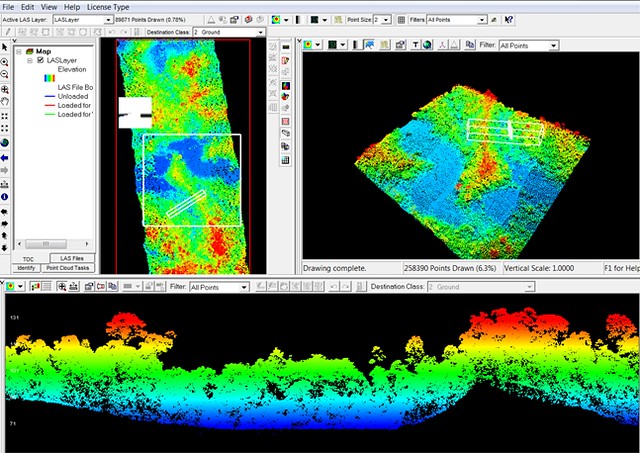ⓘ Featured image credits: Freepik
Big data is a new way to begin a treasure hunt on a massive scale. Scientists are using computing power and cloud computing to make sense out of large data sets to find advancements in traffic, the medical field, and other disciplines.
A treasure hunt has always revolved around physical hunts. When searching for an ocean treasure, a scavenger hunt of sorts would take place. Clues would be obtained, crews would be deployed, and the ocean would be explored.
Handling massive amounts of information was done in person. The first step in how to plan a treasure hunt is gathering data. Science advancements, and primarily the ability to gather and sift through big data, has evolved. Data scientists are the new explorers, and instead of searching for treasure hunt clues on the ocean bottom, they’re looking through heaps of data and analytics for “treasures.”
Data Science and the Medical Field
Everyone is on a global treasure hunt, trying to find a way to slow the spread and properly treat COVID-19. An explosion of great data is coming in from everywhere in the medical field, and data scientists are doing everything in their power to find a treatment.
The information includes:
- Similar viruses and treatments
- In-depth analysis of the virus
- Current treatment options working today
As more data is compiled, new hints as to treating the virus are coming to light. Scientists are determining that patients who have died from the virus often:
- Suffer from pre-existing conditions
- Suffer from obesity
- Are older
Key information, when it is shared among the medical community, can help find advancements in medicine, drugs, and therapy. Algorithms are key to this treasure hunt, and we’re even seeing big data and machine learning helping with diagnosis based on images, such as x-rays.
Data scientists dig deep into the figures, and they look for correlations in the data provided to begin their treasure hunt.
Correlations are essentially scavenger hunt clues that have patterns. For example, it’s possible to dive into data to find which groups of individuals are higher risks for a disease, which groups tend to fight off the disease. We can determine if weight is a factor and what forms of treatment work, or analyze the efficacy of certain treatment combinations.
Patterns never seen before can now be located, documented, and tested by data scientists on a treasure hunt.
Data Science Isn’t New
Data science isn’t new, and there have been researchers sifting through large amounts of information for decades. The change in the treasure hunt is the ability to use the information in a meaningful way.
Computing power has evolved and become far cheaper than it has ever been.
Cloud computing has reached new heights and allows data to go through hundreds or thousands of servers, spun up on-demand, to analyze larger sets of data. The world is also digital, so the data is being recorded at levels that have never been seen before.

Surveys, for example, are a means of information collection that has been in use for ages.
The difference is in both:
- Scale
- Computing
Computers can handle the analysis at speeds that would be impossible for humans to do. Analyzing data at high speed means that the information could be useful in the immediate future.
We’ve entered a new era of big data where signals are coming to scientists, engineers, and others at rapid speeds. The information is available, and entire fields are relying on the analysis of the data to begin a new treasure hunt.
There are researchers right now on a treasure hunt using the information across a variety of fields and disciplines to look for clues on:
- Cures for cancer or even new treatment options to extend a cancer patient’s life.
- Different ways to map cities and approach traffic to reduce congestion and accidents.
- Analyze data to look for signs of life across the galaxy.
Data can solve most problems, and it’s this information that is turning to a real-life treasure hunt. Applications of big data are also being applied to real treasure hunts. The Lost City of the Monkey God, for example, was lost for hundreds and hundreds of years.
But information helped uncover the city with the use of LIDAR mapping technology.
The technology started a new obsession because it could look under tree canopies to be able to find signs of human activity. When trying to find this activity in the middle of the Amazon, it’s nearly impossible and very dangerous.
Intense mapping and analysis were done to be able to find the city that has been lost to history.
Due to the broad scope of data analytics and its ability to help the world and businesses progress into the future, it makes sense for companies to hire trained analytics professionals to allow them to implement better analytics software and AI bots. This will result in a far superior understanding of the data collected and better problem-solving as a whole. Alternatively, a business could invest in its current staff by offering online business analytics masters courses. By investing this way, a business will remain competitive and help tackle more significant, more socially beneficial problems that affect humankind as a whole.
What new treasure hunts would you like to see big data tackle?
ⓘ As part of our ongoing support for startups and SMEs, LAFFAZ Media publishes feature and resource articles that may include references and links to external websites. These inclusions are selected at our editorial discretion to provide valuable information to our readers. LAFFAZ Media does not control, endorse, or assume responsibility for the content or practices of external websites. For more details, please refer to our Terms and Conditions.






